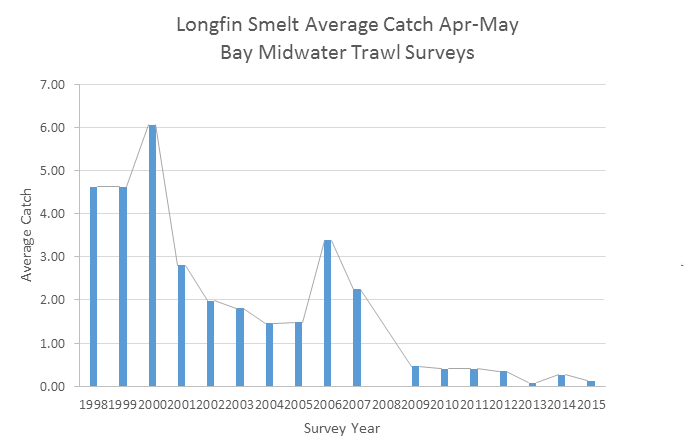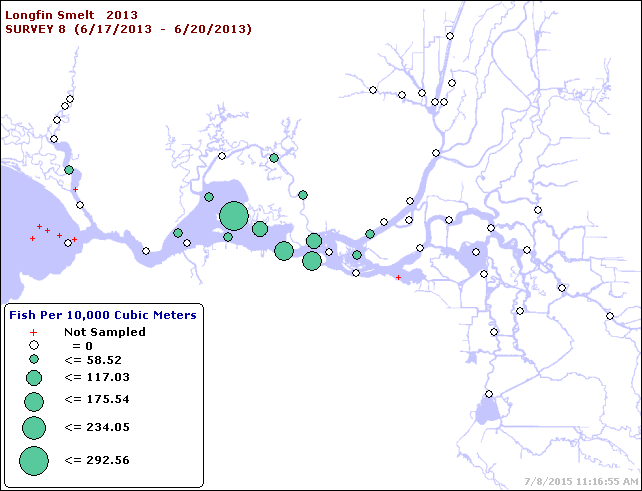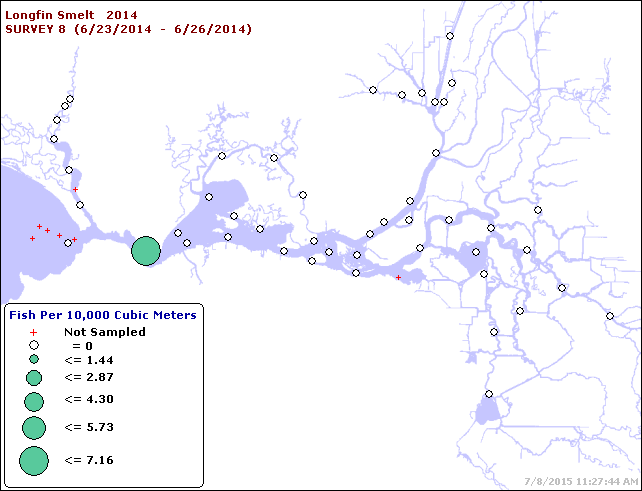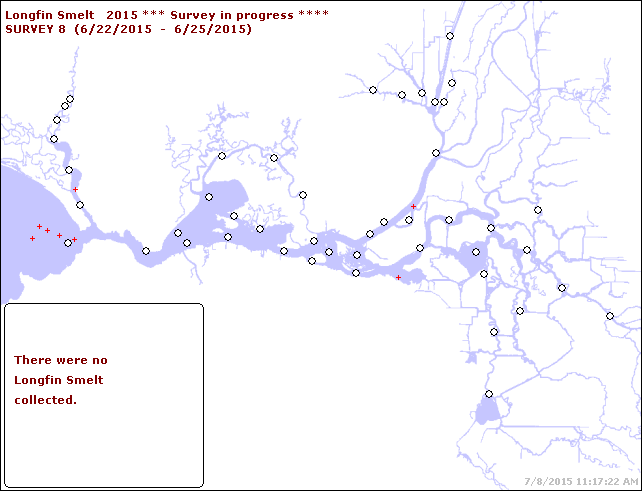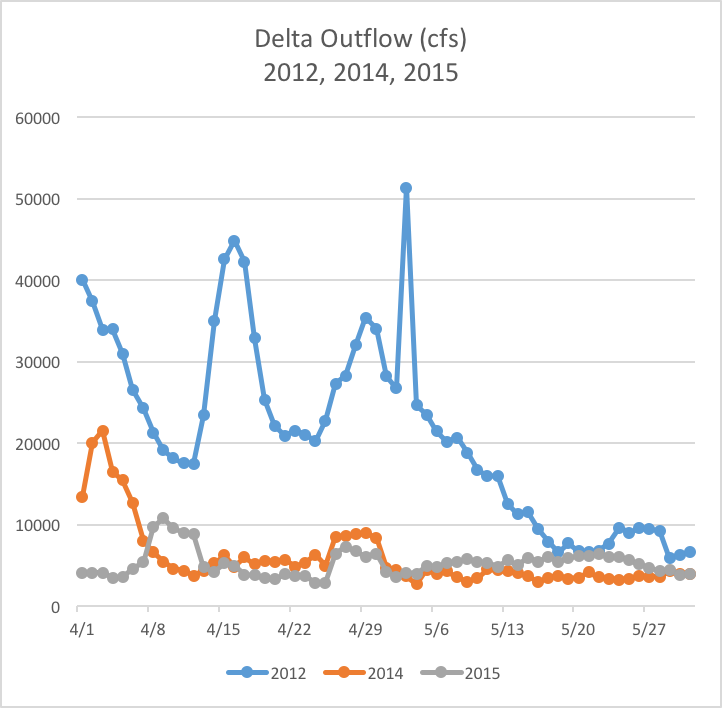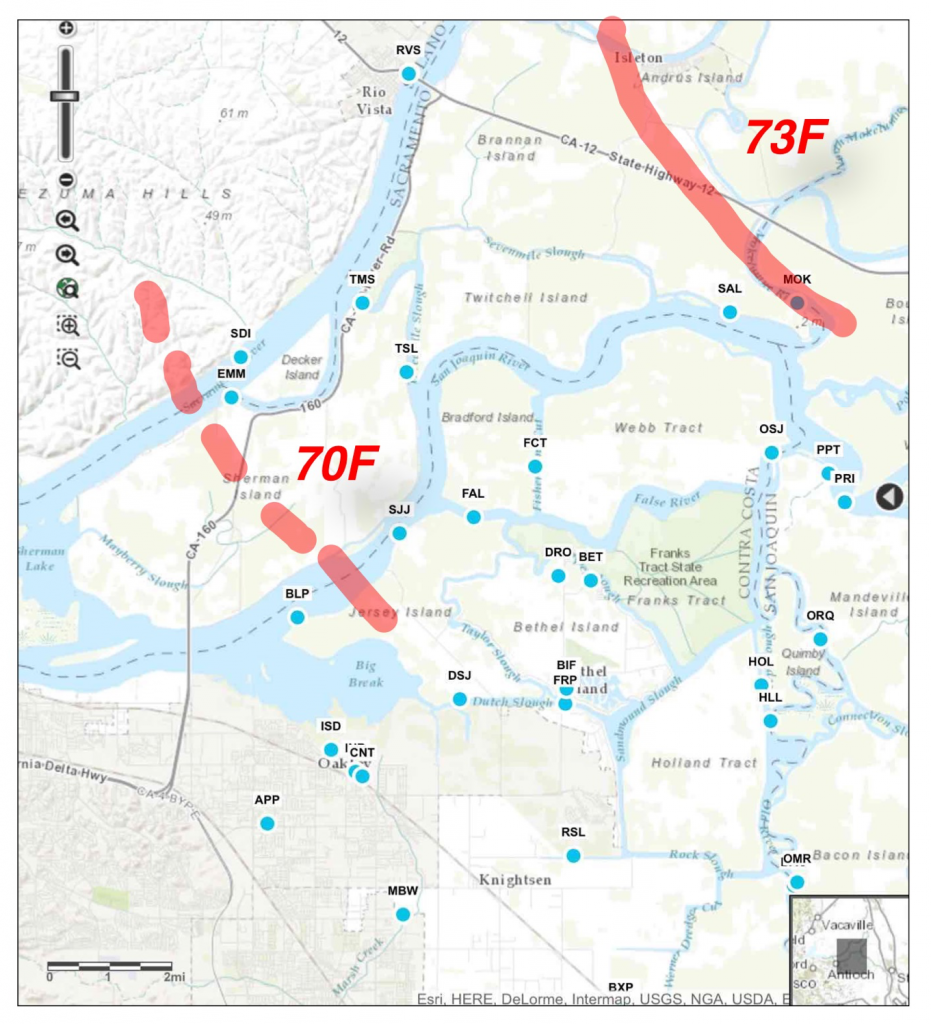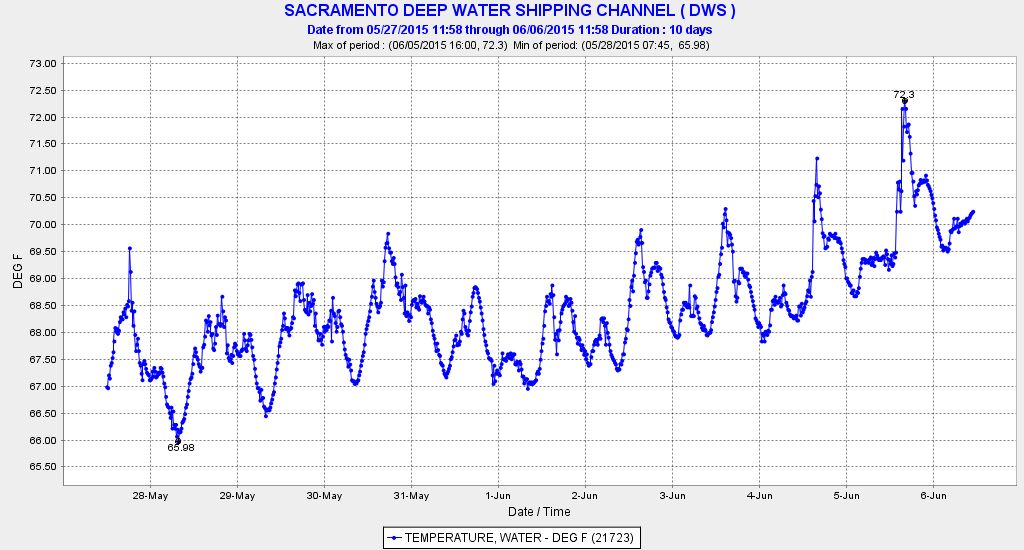What does the May 21 TUCP mean for the Delta if the State Board adopts it for the summer? What would be the consequences of weakening the outdated standards for outflow and salinity do to the Bay-Delta ecosystem?

Location of X2 and Delta Outflow
The location of X2, the critical location of the Low Salinity Zone center where salinity is 2 parts per thousand (ppt), is shown below for various Net Delta Outflow Indices (NDOI). The existing standards and proposed changes are as follows:
- 4000 cfs NDOI in July – 3000 cfs proposed
- 3000 cfs NDOI August – 2500 cfs proposed for September
- X2 (2.78 mmhoes EC) required at Emmaton (EMM) moved upstream to Threemile Slough (TMS) through August 15 (no limit thereafter)
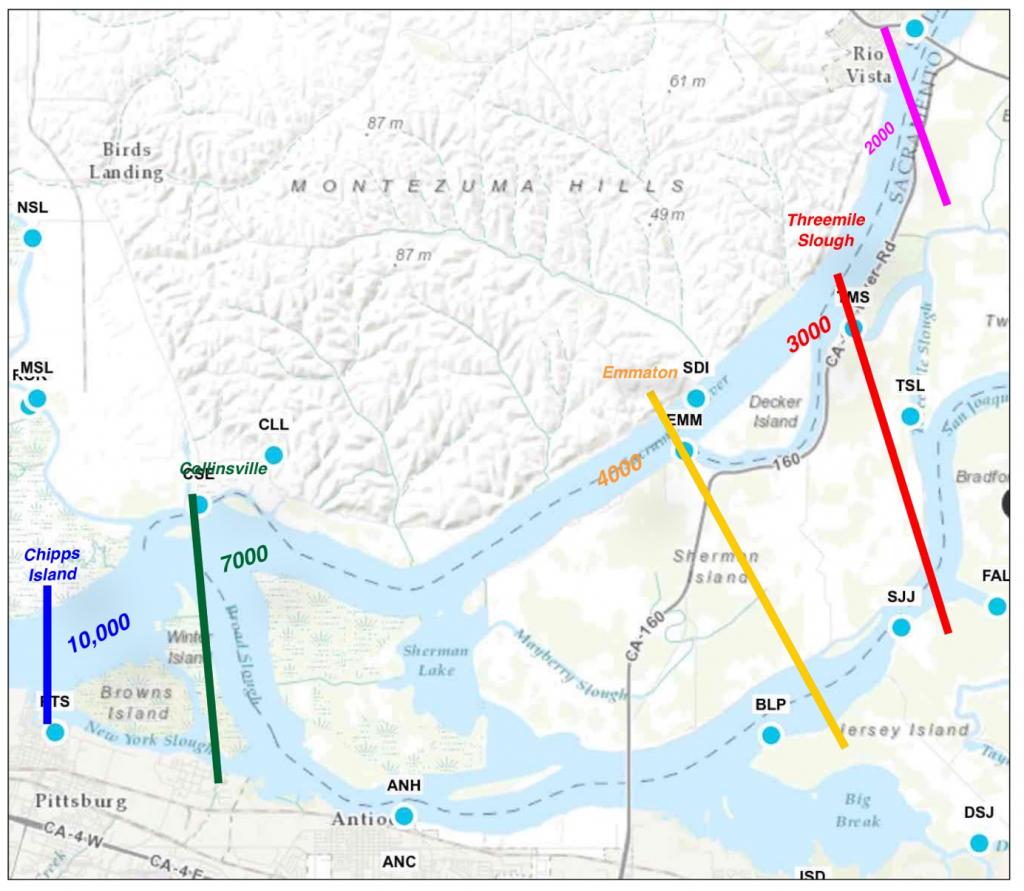
Location of X2 in Bay-Delta at various Delta outflows (NDOI cfs).
Effect on Water Temperature
In June weakened standards from a previous TUCP were 4000 cfs NDOI, with X2 allowed at TMS. Water temperature at X2 location by mid-June reached 70-73°F, levels considered sublethal but stressful on Delta Smelt.

Early June 2015 water temperatures in X2 region.
On June 12, 2015, X2 reached Rio Vista Bridge (for first time this year) on high tide after midnight at 72°F (NDOI was 5200 cfs). Afternoon water temperatures at bridge at low tide had been >74°F. When EC was 2000 at TMS, the water temperature was 72°F. On this date in 2012, the X2 location was downstream of EMM, with an NDOI of 7100 cfs and a water temperature of 69°F. On this date in 2013, X2 was downstream of EMM, with an NDOI of 7500 cfs and a water temperature of 68°F. On this date in 2014, X2 was upstream of EMM, with an NDOI of 3150 cfs and a water temperature of 72°F. The pattern is consistent with the hypothesis that the further X2 is east, the warmer the water temperature will be. The pattern also indicates that the normal standard of 7100 cfs keeps water temperatures at X2 below 70°F, at least in late spring.
My prediction for water temperature for July through September in the X2 region is shown below. This conservative prediction is based on June 2015 and June-September 2014 data.
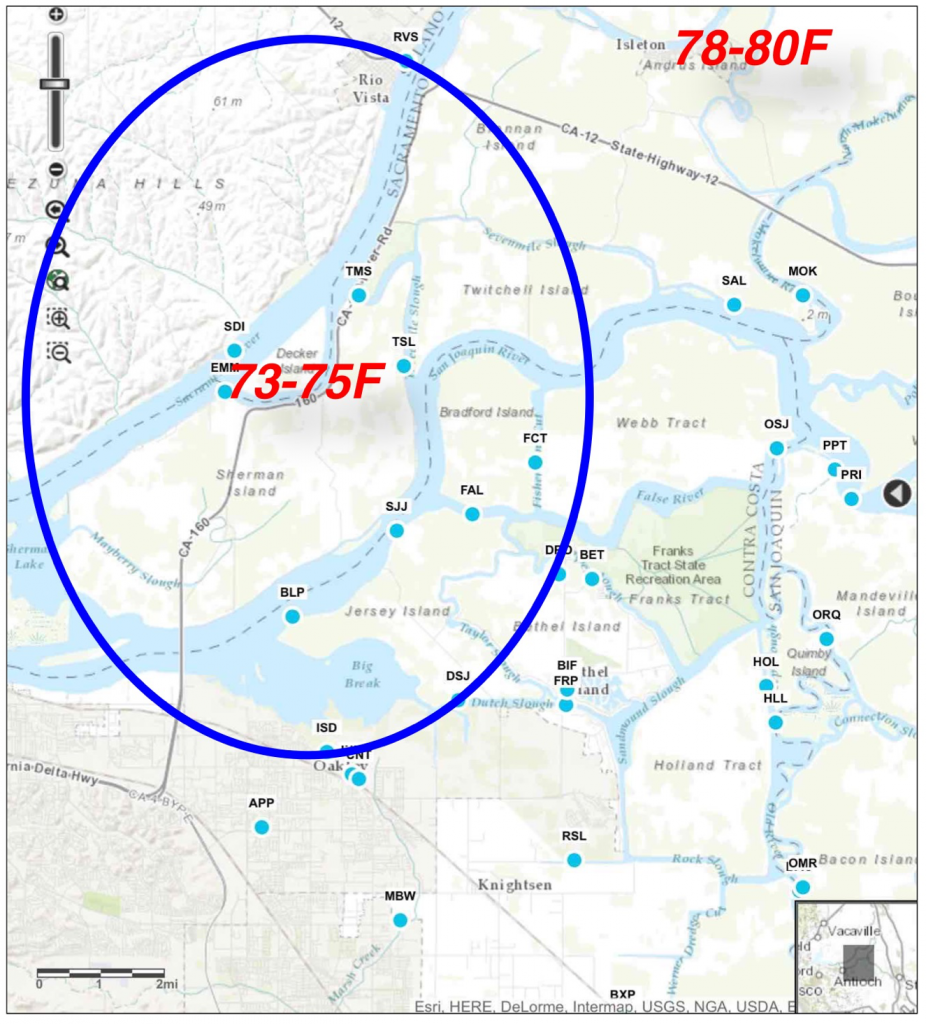
Predicted summer water temperatures in X2 region of the Delta under proposed weakened standards.
Consequences to Smelt and Salmon
Delta Smelt, already on the brink of extinction, will be further stressed by near lethal water temperatures in the X2 region. We can assume that only a small number of smelt remain in the X2 zone going into summer 2015, as compared to 2012 (see following charts). Any remaining smelt in the X2 zone must be protected at least at the normal standards as in 2012. Any weakening of the critical year standards will jeopardize the existence of the species.
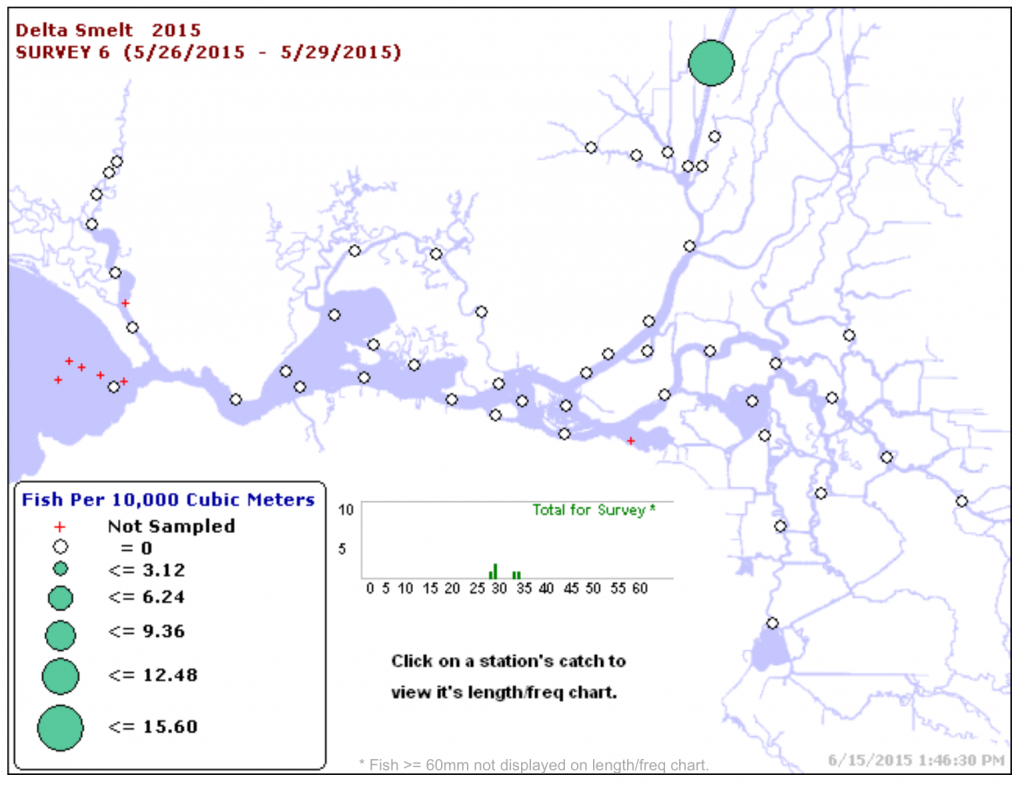
No Delta Smelt were collected from the X2 zone in late May 2015. Only 5 were collected at the northern Deep Water Ship Channel station.”
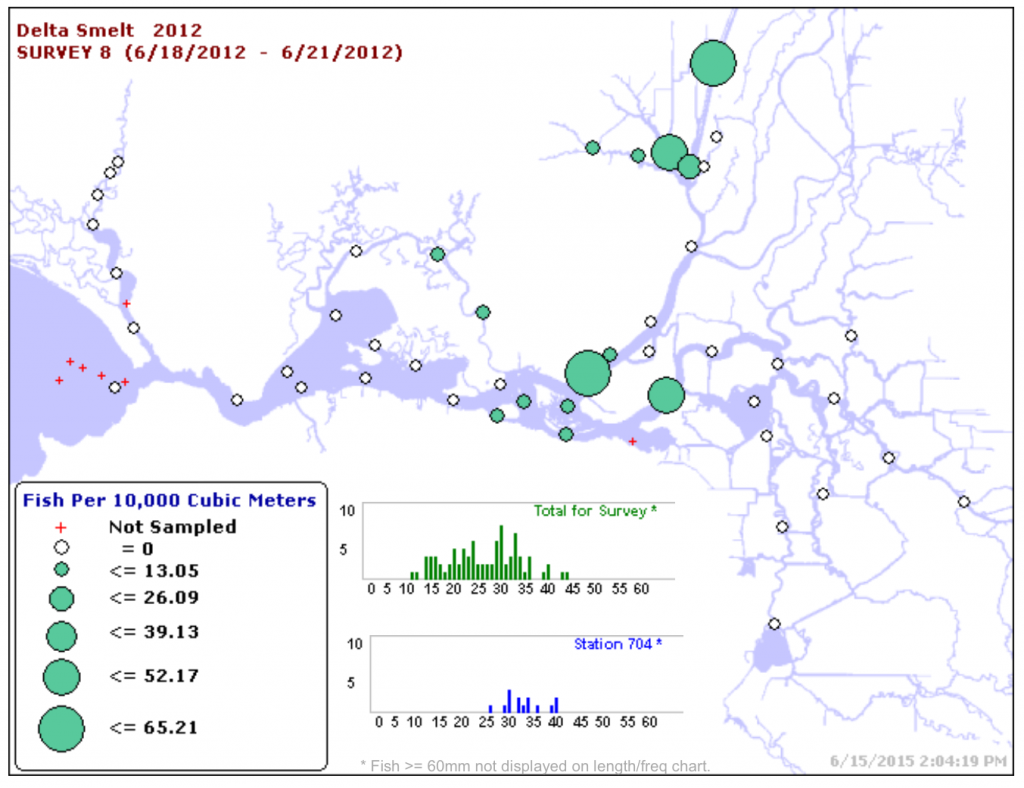
In contrast to 2015, the distribution of Delta Smelt in late spring 2012 shows higher numbers collected in the X2 zone below Emmaton under NDOIs of 8000-10,000 cfs. Water temperatures at that time in the X2 zone were <70°F.
Fall Run Chinook Salmon enter the Bay-Delta on their spawning migrations from the ocean in August-September. Expected near -lethal water temperature (>77°F) will delay and stress these fish. Expected water temperatures greater than 70°F will stop migrations and degrade subsequent adult salmon pre-spawn survival and egg viability. The proposed 2500 cfs outflow standard for September will result in water temperatures of 73-75°F in the X2 zone near Rio Vista in mid-September. In contrast, in mid -September 2012, outflow was 7100 cfs and water temperatures at Rio Vista and the X2 zone near Emmaton were <70°F.

